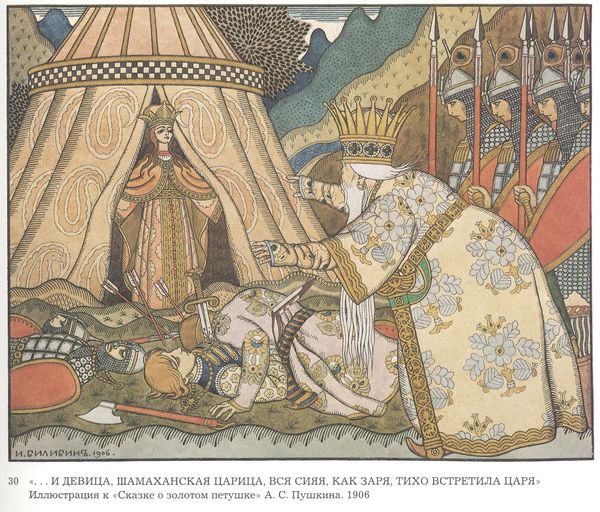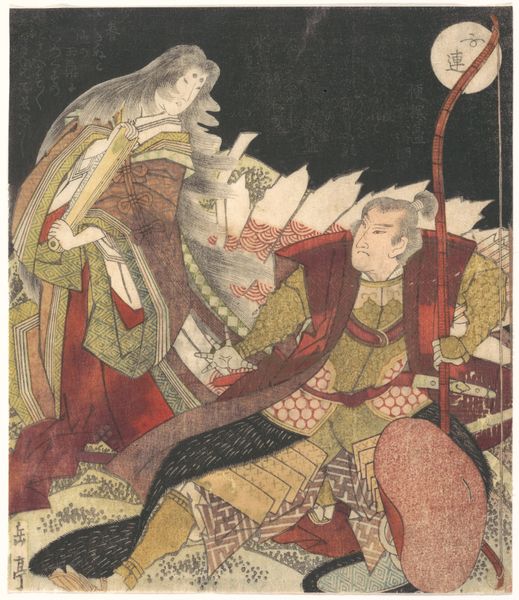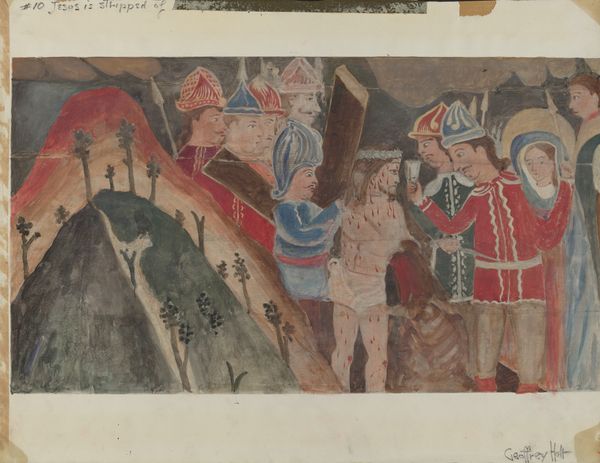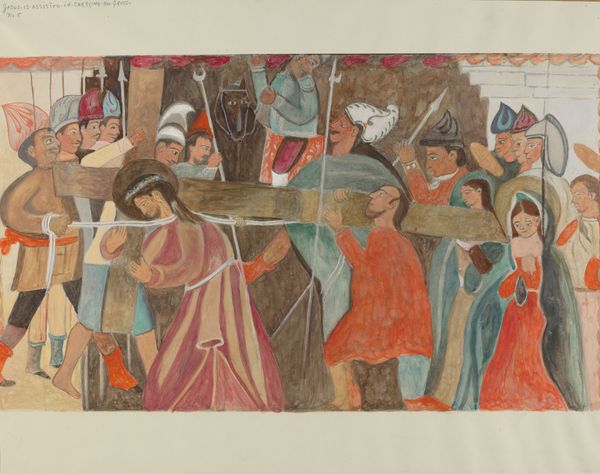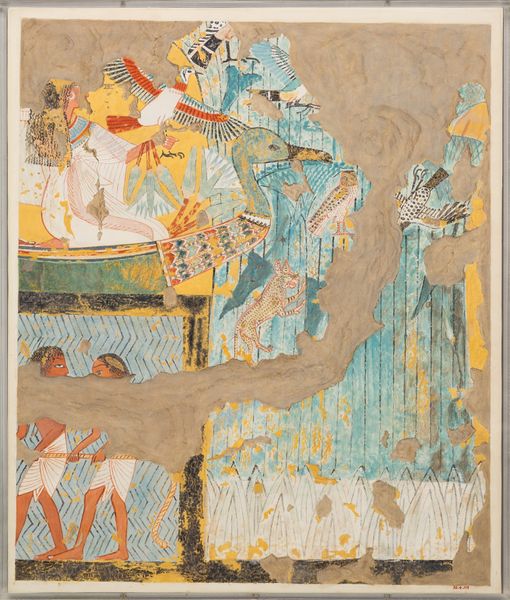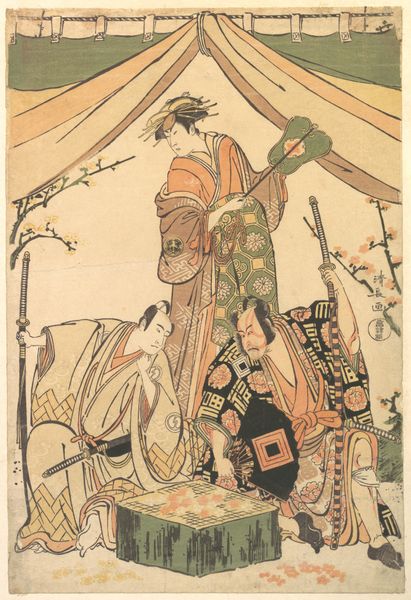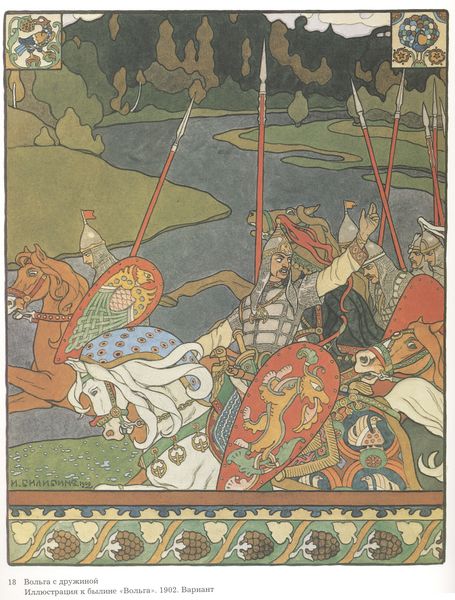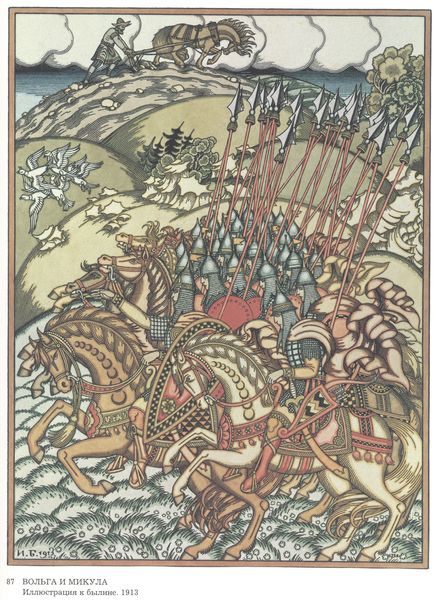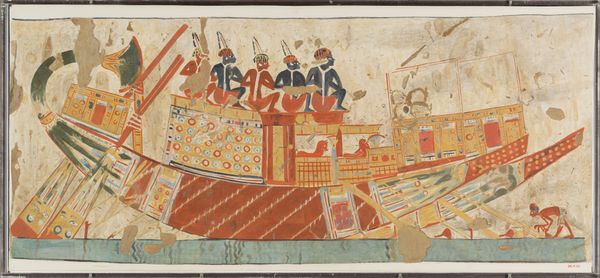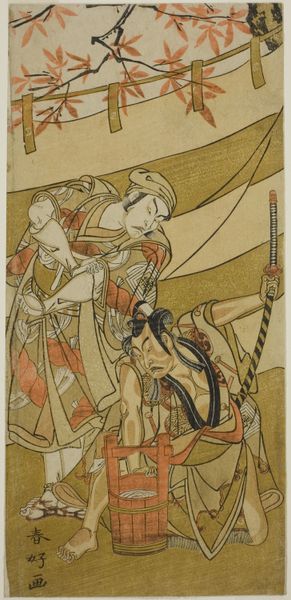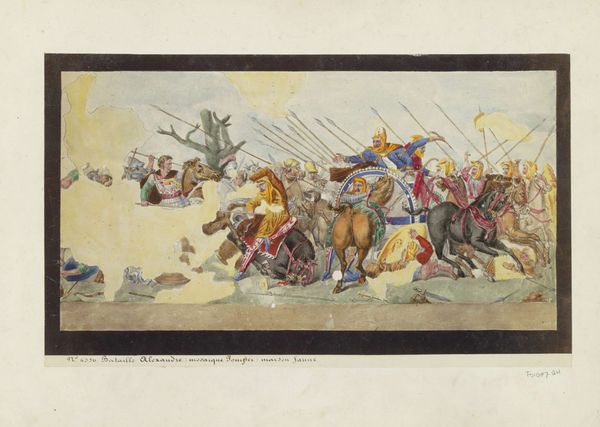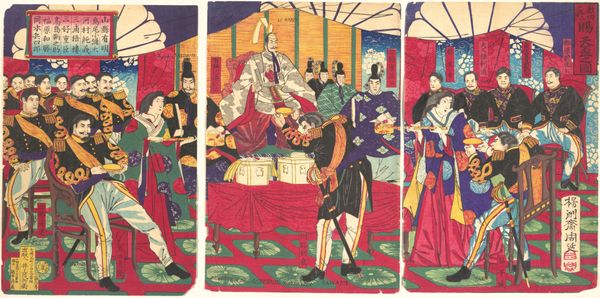
Illustration for the poem 'The Tale of the Golden Cockerel' by Alexander Pushkin 1906
0:00
0:00
painting, watercolor
#
night
#
medieval
#
narrative-art
#
painting
#
war
#
fantasy-art
#
figuration
#
watercolor
#
orientalism
#
traditional art medium
#
mythology
#
russian-avant-garde
#
watercolour illustration
#
history-painting
#
watercolor
Copyright: Public domain
Curator: Ah, yes, this vibrant scene. It’s Ivan Bilibin’s 1906 illustration for Alexander Pushkin's poem, “The Tale of the Golden Cockerel.” Editor: Well, the first thing that jumps out is the level of detail—I mean, look at those riders! It feels both incredibly ornate and somehow...flat. Like something woven. Curator: Woven...that’s interesting. Bilibin was heavily influenced by traditional Russian folk art. Notice how he uses defined outlines, creating almost a tapestry effect? He really elevated what might have been considered craft. Editor: Right, because those flat planes—it's almost like he's deliberately showing off the layering of color. What’s striking is his application of watercolor and how it mimics printed textiles; the materiality implies this connection to artisanry. You could almost see these repeated on fabric, wallpapers or book covers. Curator: Precisely! And consider Pushkin's poem itself - it’s a satire, cloaked in folklore. So Bilibin's artistic choice—celebrating traditional crafts while illustrating this fantastical story— it deepens that layer of meaning, you know? It suggests the beauty and deceptive simplicity of cultural narratives. Editor: That makes sense. There’s this fascinating dialogue happening between medium, material, and narrative tradition. He doesn't shy away from representing opulent details like garments or war accessories but I do wonder what considerations in terms of printing techniques influenced this painting... Did Bilibin work closely with printmakers or directly create print plates to have tighter control over final material outcomes? Curator: The illustration style does have the clarity of intention and precision associated with print production, so it would not surprise me. Editor: Looking closer I see now the rhythmic march, the layers and layering—a deliberate echoing of mass production through careful art making. Curator: A perfect encapsulation, wouldn’t you say? Bilibin truly captures how material culture elevates not only folklore but lived experience into visual delights. Editor: Exactly! It feels far less static, seeing those intentional layers between form, production, and storytelling at play here.
Comments
No comments
Be the first to comment and join the conversation on the ultimate creative platform.

